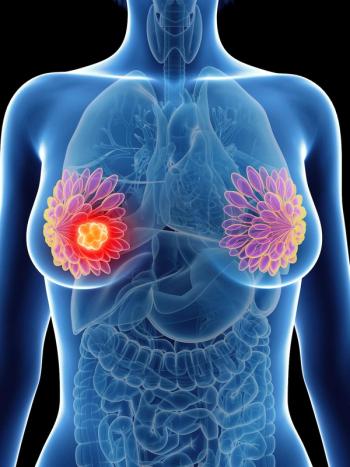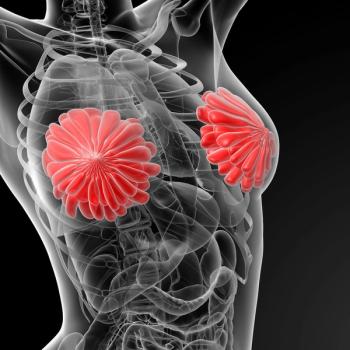
- ONCOLOGY Vol 15 No 9
- Volume 15
- Issue 9
Liposomal Doxorubicin Significantly Reduces Cardiotoxicity in Advanced Breast Cancer Patients
Doxorubicin coated in tiny droplets of oil is as effective as the standard formulation but much less toxic when used to treat
Doxorubicin coated in tiny droplets of oil is as effective as the standard formulation but muchless toxic when used to treat women with advanced breast cancer. Doxorubicin isknown to cause damage to individual muscles and the blood vessels of the heart,thereby raising the risk of heart failure to as high as 5% in patients receivingthe maximum recommended dose. According to a recent study, surroundingdoxorubicin by protective liposomes allows it to flow through the heart withoutdissolving, thus lowering the risk of heart damage.
Passes Through the Heart
In a phase III clinical trial in 297 patients, only 6% of those withmetastasized breast cancer developed cardiotoxicity when treated with aliposome-encapsulated doxorubicin preparation known as Myocet (approved for usein Europe but investigational in the United States and Canada),* compared to 21%of those treated with standard doxorubicin. Both groups of patients alsoreceived cyclophosphamide (Cytoxan, Neosar), and both had equivalent responserates.
"Liposome-encapsulated doxorubicin passes right through the heart andlodges in organs such as the liver and in the blood vessels that feed tumors,and then slowly dissolves, allowing the doxorubicin to fight the cancercells," said the study’s lead author Gerald Batist, MD, a professor atMcGill University and director of the Center for Translational Research inCancer at Jewish General Hospital, Montreal, Quebec.
This means physicians may be able to treat patients with the liposomalformulation of doxorubicin for longer periods than is now possible with thestandard formulation. "Although doxorubicin is the single most activetreatment for breast cancer, it comes with a risk of cardiotoxicity, and themore it is used, the greater the risk," said Dr. Batist. "By usingliposome-encapsulated doxorubicin, patients may be able to stay on treatmentlonger or receive additional treatment if their cancer recurs, while reducingtheir risk of cardiotoxicity."
* Liposomal doxorubicin is available as Doxil in the United States.
Articles in this issue
over 24 years ago
Patients’ Bill of Rights Good News Either Wayover 24 years ago
New Joint FDA/NCI Cancer Programover 24 years ago
NCI Considers Lung Cancer Trialover 24 years ago
Considerations in the Diagnosis and Management of Brain Metastasesover 24 years ago
Prostate Cancer in the Older Manover 24 years ago
Selective Estrogen-Receptor Modulators in 2001over 24 years ago
Current Clinical Trials of Epothilone B Analog (BMS-247550)Newsletter
Stay up to date on recent advances in the multidisciplinary approach to cancer.


















































































